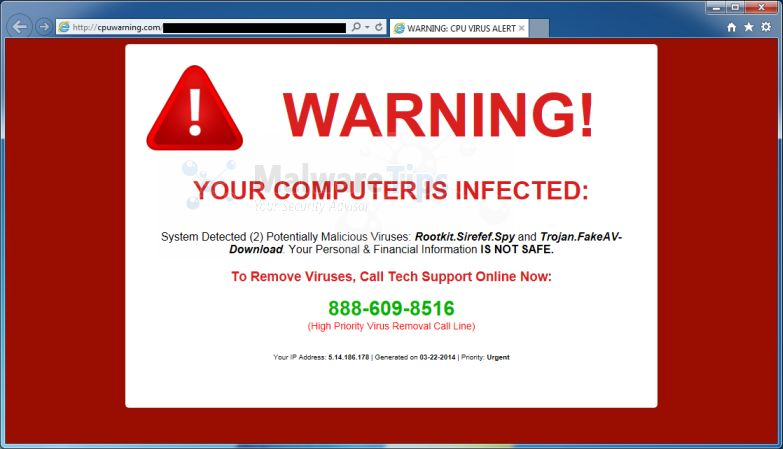Recently, I experienced the frustration of having my computer shut down by Microsoft due to a scam virus alert.
Understanding the Shutdown Issue
If you encounter a message claiming that Microsoft has shut down your computer due to a virus alert, it is likely a scam. Do not call the number provided or provide any personal information. Scammers often use scare tactics to manipulate individuals into giving them access to their computers.
The best course of action is to close the browser window or restart your computer to get rid of the scam message. It is important to run a full system scan using a reputable antivirus program to ensure that your computer is not infected with any malware.
Remember to keep your operating system and antivirus software updated to protect your computer from potential security threats. If you are unsure about the legitimacy of a message or pop-up on your computer, seek help from a trusted IT professional.
By staying informed and cautious, you can avoid falling victim to scams like the one claiming Microsoft has shut down your computer. Protect your data and privacy by being proactive in your approach to online security.
Potential Causes of Unwanted Shutdowns
- Run a full system scan using a reputable antivirus program.
- Remove any detected threats and restart your computer.
Update Operating System and Software
- Check for available updates for your operating system and installed programs.
- Download and install all updates to ensure security and stability.
Check for Overheating
- Clean out any dust or debris from the computer’s cooling system.
- Ensure proper ventilation around the computer to prevent overheating.
Check Hardware Components
- Inspect hardware components such as RAM, hard drive, and power supply for any issues.
- Replace any faulty hardware if necessary.
Preventing Unwanted Programs Installation

To prevent unwanted programs from being installed on your computer, be cautious when downloading software or clicking on pop-up ads. Make sure to only download programs from reputable sources and avoid clicking on suspicious links. Regularly update your operating system and antivirus software to protect against potential threats.
Additionally, be mindful of the permissions you grant to applications and only allow access to necessary features. Avoid clicking on unfamiliar email attachments or links as they may contain malware. Enable pop-up blockers in your web browser to prevent unwanted pop-ups from appearing.
If you encounter a scam virus alert claiming to be from Microsoft, do not click on any links or provide any personal information. Run a full scan of your computer using your antivirus software to check for any potential threats. If you suspect that your computer may be infected, seek professional help to remove the virus and prevent further damage to your system.
Steps to Remove Unwanted Programs
| Step | Description |
|---|---|
| 1 | Press Ctrl + Alt + Delete to open Task Manager |
| 2 | Go to the Processes tab and look for any suspicious programs |
| 3 | Right-click on the program and select End Task to stop it from running |
| 4 | Open Control Panel and go to Programs and Features |
| 5 | Find the unwanted program in the list and click Uninstall |
| 6 | Follow the on-screen instructions to complete the uninstallation process |
Cleaning Up Internet Browsers
To clean up your internet browser after encountering a scam virus alert from Microsoft, follow these steps:
1. First, close all browser windows and open the browser again in safe mode. This will prevent the scam virus alert from popping up again.
2. Next, clear your browsing history, cache, and cookies. This will remove any traces of the scam virus alert and improve your browser’s performance.
3. Disable any suspicious browser extensions or add-ons that may have caused the scam virus alert. These can often be the source of such issues.
4. Run a full antivirus scan on your computer to ensure that the scam virus alert hasn’t caused any further damage. This will help to protect your data and privacy.
5. If the scam virus alert keeps appearing, consider resetting your browser settings to their default state. This will remove any unwanted changes made by the scam virus alert.
Additional Support Options
Contact Microsoft Support: Reach out to Microsoft Support for assistance in dealing with the scam virus alert. They can provide guidance on how to remove the virus and protect your computer from future attacks.
Use Online Resources: Look for online forums or support communities where you can find advice from other users who have experienced similar issues. You may also find step-by-step guides on how to remove the scam virus alert yourself.
Seek Professional Help: If you are unable to remove the virus on your own, consider contacting a professional IT service provider. They can help you safely remove the virus and ensure your computer is secure.
Exploring More Solutions
If you have encountered a scam virus alert claiming that Microsoft has shut down your computer, there are steps you can take to address the issue. Firstly, do not panic and do not call the number provided on the alert. This is a common scam tactic used to trick users into giving away personal information or money.
To resolve this issue, you can try force quitting your web browser by using the Task Manager (Ctrl+Alt+Delete on Windows or Command+Option+Esc on Mac). This will close the browser and prevent the scam alert from reappearing.
It is also recommended to run a full antivirus scan on your computer to check for any malicious software that may have caused the scam alert to appear. Additionally, make sure your operating system and all software are up to date to prevent future security vulnerabilities.
If the issue persists, you may need to contact Microsoft support directly for further assistance. Be cautious of providing any personal information over the phone or through email, as scammers may attempt to impersonate legitimate support representatives.
F.A.Q.
Why did Microsoft disable my computer?
Microsoft did not disable your computer. If you are experiencing issues, it is likely a scam or malware causing the problem. Try restarting your browser and running an antivirus scan to resolve the issue.
Why did Microsoft lock me out of my computer?
Microsoft locked you out of your computer because they may have detected suspicious activity on your account and temporarily locked it for security reasons. You will need to go through the account recovery process to regain access.
How do I get rid of fake Microsoft security warning?
To get rid of fake Microsoft security warnings, you can reset your browser settings to their original defaults. This can usually be done by clicking on the three dots at the top right corner of your browser, selecting “Settings”, clicking on “Advanced”, then selecting “Reset and clean up” followed by “Restore settings to their original defaults” and finally clicking “Reset settings”.
Is the Microsoft virus warning real?
The Microsoft virus warning is not real. If you encounter a pop-up warning about malware, close it immediately, disconnect from the internet, run security scans, and change your passwords to protect your information. These warnings are fake and meant to deceive you.






